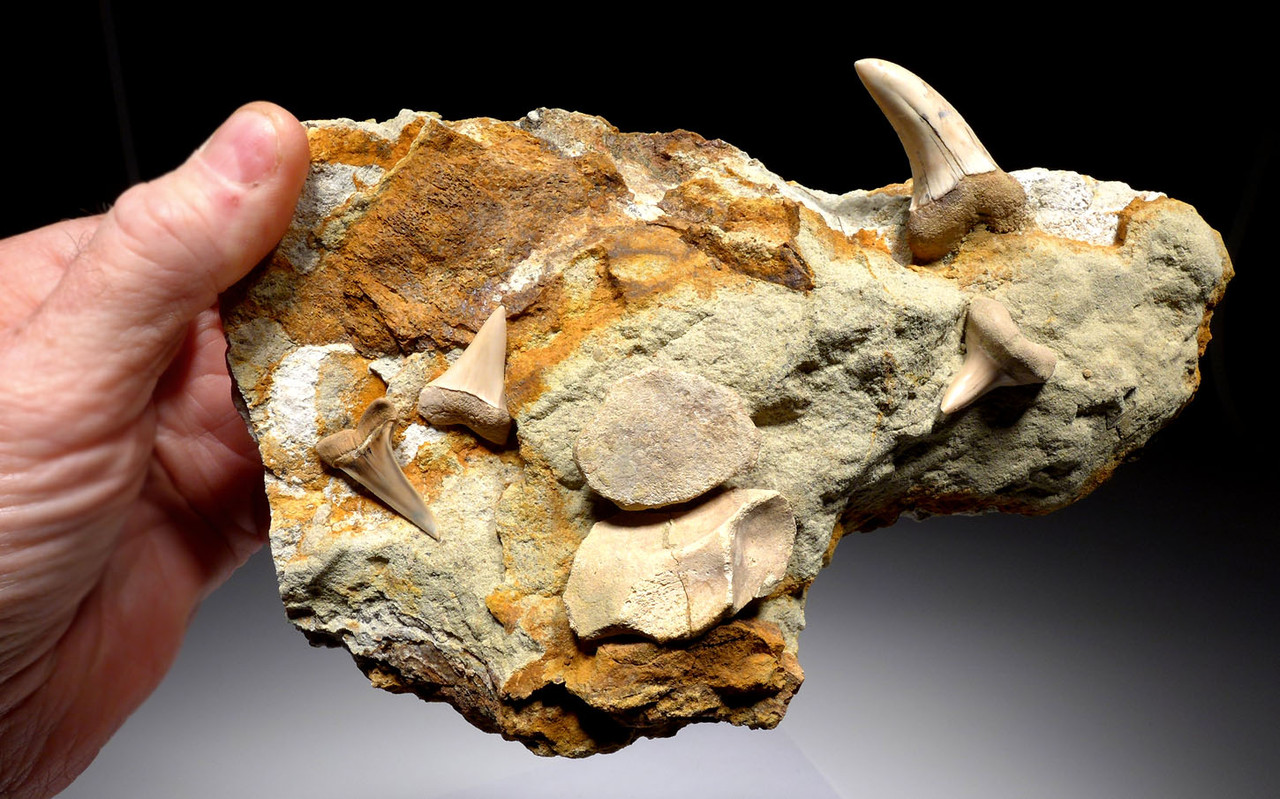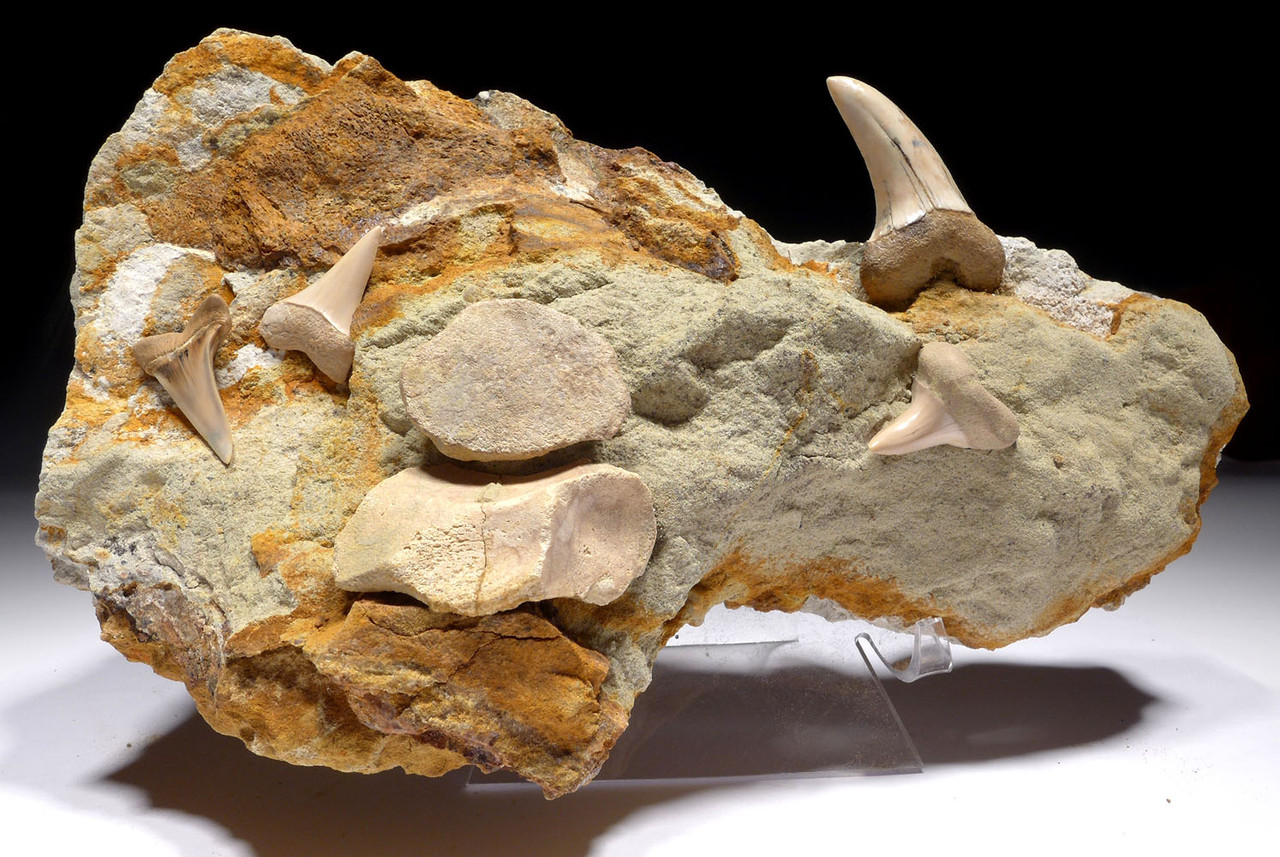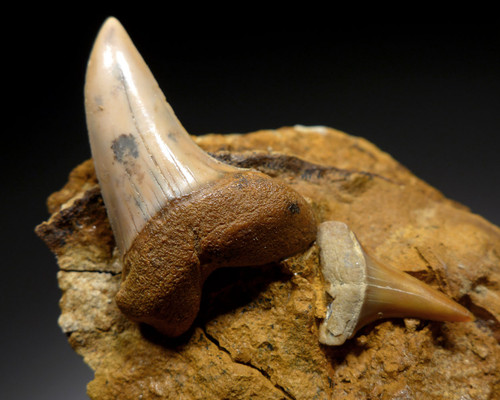Product Description
SEE MORE EXTINCT MAKO ISURUS SHARK FOSSILS
The predominant fossil shark teeth found at the famous Sharktooth Hill deposits in central California are two types of extinct Mako shark believed to be the ancestor to the present day Great White shark. They are Isurus hastalis, the extinct Giant Mako, and Isurus planus, the Hooked-tooth Mako.
This superb, LARGE display piece of original fossil-bearing Sharktooth Hill sandstone matrix contains FOUR fossil shark teeth, three of Isurus hastalis (extinct Giant Mako shark), and a large 2" long supreme Isurus planus (Hooked Tooth Mako shark). Other naturally occurring fossils can also be seen in the sandstone piece where the tooth was found.
A great display and educational shark fossil to show what the surrounding soil is like in which these famous fossil shark teeth are found in. The matrix also includes other fossil bones and teeth of fish, sea lion, whales and dolphins of various species.
HISTORY
Isurus planus, also known as the Hooked-tooth Mako shark or Hooked Mako shark, is an extinct shark that lived during the Miocene from 23 to 5 million years ago. Isurus planus fossils are only found in the marine deposits on the Pacific Rim, especially the west coast of the United States. Isurus planus fossil shark teeth reach a maximum size of 2.0 in (5.0 cm) in length measured along the diagonal edge. They are most often found in the Temblor Formation of Sharktooth Hill, Bakersfield, California.
The extinct Giant Mako, Isurus hastalis, is believed to have been the eventual precursor to the modern Great White shark. This shark was a type of White shark that lived from 30 to 1 million years ago, and grew to large lengths, similar to the maximum size modern Great White shark of today.
The extinct Mako shark (Isurus) was a hunter-killer shark of marine mammals such as dolphins, seals, sea lions and juveniles of large whales. Fossils with shark bites on these marine mammals indicate this shark used similar tactics of hunting and attack like the modern Great White - attacking prey from below and behind. The strategy was a lightning quick hit from below to make a surprise fatal bite, then waiting a moment for the injured prey to bleed to incapacity where a final killing bite could be inflicted.
The rich Miocene fossil deposit known as "Sharktooth Hill" located in Bakersfield (Kern County), California has a reputation as the finest and most diverse fossil deposit of Miocene sharks, rays, bony fishes, turtles, birds and mammals (both marine and terrestrial) of the entire Pacific realm of North America. The formation is a result of silt spilling out of a prehistoric river delta into a Middle Miocene sea that once covered central California over 12 million years ago. This river originated in the nearby mountains east of Bakersfield. The fossil-bearing layer is thin ranging an average of only 6" - 18" thick but it spans approximately 100 square miles!
 US DOLLAR
US DOLLAR
 EURO
EURO
 AUSTRALIAN DOLLAR
AUSTRALIAN DOLLAR
 CANADIAN DOLLAR
CANADIAN DOLLAR
 POUND STERLING
POUND STERLING




















